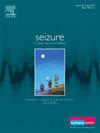Efficacy and safety of Cenobamate: a multicenter, retrospective evaluation of real-world clinical practice
IF 2.8
3区 医学
Q2 CLINICAL NEUROLOGY
引用次数: 0
Abstract
Introduction
Epilepsy is a common neurological disorder, with approximately one-third of patients experiencing drug-resistant epilepsy (DRE), which imposes significant clinical, social, and economic burdens. Cenobamate, a novel antiseizure medication (ASM), was included to the Polish therapeutic framework in March 2023.
Materials and Methods
This retrospective, multicenter study was conducted at 19 centers. Medical records of adult patients with DRE treated with cenobamate for at least six months were reviewed. Collected data included demographic characteristics, seizure frequency, treatment regimens, and adverse events (AEs). Descriptive statistical methods were employed to assess outcomes, with the primary efficacy endpoint of ≥50 % reduction in seizure frequency.
Results
The study cohort consisted of 475 patients with a median age of 37 years. Treatment with cenobamate (median maximal daily dose, 250 mg) resulted in a ≥ 50 % reduction in seizure frequency in 61.9 % of patients, with 16.5 % achieving seizure freedom during the final three months of observation, with better responses when the treatment was initiated earlier. The burden of polytherapy decreased, as 69.7 % of patients reduced or discontinued concomitant ASMs. Adverse events were reported in 48.8 % of patients, most commonly somnolence and dizziness, with no cases of severe dermatological reactions. Discontinuation of cenobamate occurred in 12 % of patients.
Discussion
Cenobamate demonstrated notable efficacy in patients with treatment-resistant epilepsy, and its early initiation may improve outcomes. Treatment has a large potential for significant simplification of treatment regimens. Adverse events were manageable.
Conclusions
Cenobamate is a highly effective and well-tolerated ASM for patients with DRE, offering significant clinical benefits, including improved seizure control and reduced polytherapy.

Cenobamate的有效性和安全性:一项多中心的临床实践回顾性评估
癫痫是一种常见的神经系统疾病,大约三分之一的患者患有耐药癫痫(DRE),这给临床、社会和经济带来了重大负担。Cenobamate是一种新型抗癫痫药物(ASM),于2023年3月被纳入波兰治疗框架。材料与方法本研究在19个中心进行回顾性、多中心研究。本研究回顾了使用cenobamate治疗至少6个月的成年DRE患者的医疗记录。收集的数据包括人口统计学特征、癫痫发作频率、治疗方案和不良事件(ae)。采用描述性统计方法评估结果,主要疗效终点为癫痫发作频率降低≥50%。研究队列包括475例患者,中位年龄为37岁。使用cenobamate(最大中位日剂量250mg)治疗,61.9%的患者癫痫发作频率降低≥50%,16.5%的患者在最后三个月的观察中实现了癫痫发作自由,早期开始治疗效果更好。由于69.7%的患者减少或停止了伴随性高潮,多重治疗的负担减轻了。48.8%的患者报告了不良事件,最常见的是嗜睡和头晕,没有严重的皮肤反应病例。12%的患者停药。cenobamate在治疗难治性癫痫患者中表现出显著的疗效,早期使用可能改善预后。治疗具有显著简化治疗方案的巨大潜力。不良事件是可控的。结论scenobamate对于DRE患者是一种高效且耐受性良好的ASM,具有显著的临床益处,包括改善癫痫发作控制和减少多次治疗。
本文章由计算机程序翻译,如有差异,请以英文原文为准。
求助全文
约1分钟内获得全文
求助全文
来源期刊

Seizure-European Journal of Epilepsy
医学-临床神经学
CiteScore
5.60
自引率
6.70%
发文量
231
审稿时长
34 days
期刊介绍:
Seizure - European Journal of Epilepsy is an international journal owned by Epilepsy Action (the largest member led epilepsy organisation in the UK). It provides a forum for papers on all topics related to epilepsy and seizure disorders.
 求助内容:
求助内容: 应助结果提醒方式:
应助结果提醒方式:


